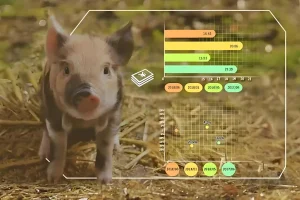The edible mushroom industry is promising
Edible fungi have once again been included in the 2025 Central Document No. 1. Under the concept of a broad food view, the edible fungi industry has great potential. On February 23rd, the 2025 Central Document No. 1 was officially released. As a guiding document for the “agriculture, rural areas, and farmers” work throughout the year, the document proposed to practice a broad agricultural view and a broad food view, develop food resources in all directions and through multiple channels, and promote the quality improvement and efficiency increase of the edible fungi industry. This undoubtedly injects strong impetus into the development of the edible fungi industry.
Historical Policy Support and Industry Growth
Since the new century, the edible fungi industry has played a significant role in increasing agricultural efficiency, farmers’ income, and the construction of new rural areas. The state has successively introduced a series of policies and measures to cultivate and expand the edible fungi industry. Especially as the guiding document for the “agriculture, rural areas, and farmers” work throughout the year, the development of the edible fungi industry has been repeatedly mentioned in recent years.
- 2017: Edible fungi were listed as an “advantageous and characteristic industry” for the first time.
- 2019: The Central No. 1 Document proposed “actively developing industries such as fruits, vegetables, tea, and edible fungi”.
- 2021: The Central No. 1 Document emphasized innovation-driven development.
Through technological innovation and the promotion of green and organic planting techniques, the quality and added value of edible fungi have significantly improved, and the scale, efficiency, and market competitiveness of enterprises have further expanded. The upgrading and structural adjustment of the industry have accelerated, and the edible fungi industry has continued to grow and develop.
The 2023 and 2025 Central Documents: A Focus on Diversification and Efficiency
The 2023 Central No. 1 Document pointed out that “a broad food view should be established, and a diversified food supply system that integrates grain, economic crops, and forage, combines agriculture, forestry, animal husbandry, and fishery, and involves plants, animals, and microorganisms should be accelerated to build”, and “the edible fungi and algae industries should be cultivated and expanded”, providing policy support for the quality improvement and efficiency increase of the edible fungi industry.
Although the 2024 document did not directly mention “expanding the edible fungi industry”, policies related to edible fungi covered six major parts and 28 articles, involving fields such as land use, facility agriculture, circular economy, and consumption assistance, with a significant increase in policy value.
The 2025 document directly mentioned the need to promote the quality improvement and efficiency increase of the edible fungi industry. It is evident that the state has attached great importance to the development of the edible fungi industry in recent years. The edible fungi industry has shown a trend of gradual deepening and systematization in terms of policy support, industrial positioning, and development paths, becoming an important tool for rural revitalization and modern agricultural development.
The Shift in Food Demand and the Role of Edible Fungi
With the rapid development of society and the continuous improvement of people’s living standards, people’s demand for food has shifted from “eating enough” to “eating well” and “eating healthily”. Practicing the broad food view is not only a strategic choice for ensuring national food security but also an important way to meet the people’s aspiration for a better life.
In recent years, the edible fungi industry has been incorporated into the top-level design of the “Grand Food View”, “Grand Agricultural View”, and the “Three-Element Cycle” (plants, animals, and fungi). Edible fungi have gradually evolved from a “specialty agricultural product” to a core industry that ensures food security and promotes rural revitalization. It has become the fifth largest planting industry after grains, oils, fruits, and vegetables, with an annual output exceeding 42 million tons, accounting for over 75% of the global total.
Technological Innovation and Market Expansion
In September 2024, the General Office of the State Council issued the “Opinions on Practicing the Grand Food View and Building a Diversified Food Supply System”, with one of its key tasks being to develop and expand the edible fungi industry and explore edible fungi food products. Under the guidance of the concept of healthy eating, edible fungi are no longer rare delicacies found only in the mountains and forests. With their unique nutritional value and flavor, they not only increase the “fungi content” on dining tables and enrich people’s taste experiences, but also become an important part of the grand food chain and an indispensable component of modern food culture.
The implementation of the Grand Food View has brought new opportunities to the development of the edible fungi industry. With the increasing demand for healthy food from consumers and the advancement of agricultural modernization, the edible fungi industry, as an important part of China’s modern large-scale agriculture and a model of modern characteristic and efficient agriculture, has a broad market prospect and great potential.
The implementation of the Grand Food View also advocates green and low-carbon agricultural production methods, promoting the harmonious development of agriculture and the ecological environment. Edible fungi, as green, organic, pollution-free, and functional foods, have gradually become a consumption hotspot. Moreover, as a green circular agriculture, they achieve efficient resource utilization and increase farmers’ income, providing a new growth point for high-quality and sustainable agricultural development.
The Role of Technological Innovation
The implementation of the concept of “big food” cannot be achieved without the support of scientific and technological innovation. In recent years, China has made remarkable achievements in the field of edible fungi technology.
- The achievement “Key Technology Innovation and Application of the Entire Industrial Chain of Edible and Medicinal Fungi” led by Academician Li Yu of the Chinese Academy of Engineering won the first prize of the National Science and Technology Progress Award.
- The high-quality edible fungi strains cultivated through gene editing technology, aviation breeding technology, etc. have promoted the innovation and transformation of the “chip” of fungi strains and solved the “bottleneck” problems of the industry.
In addition, new technologies such as artificial intelligence, blockchain, AI technology, and the Internet of Things are widely applied in the production of edible fungi, accelerating the all-round digital and intelligent transformation from product research and development, production and manufacturing to management and marketing, improving the digital level of the edible fungi industry and promoting the transformation and upgrading of the industry.
Conclusion
Overall, the 2025 Central Document No. 1 has injected policy certainty into the development of the edible fungi industry. Under the “dual drive” of rural revitalization and the concept of “big food”, the edible fungi industry, as an important means to expand food sources and ensure food security, is bound to achieve great development. In the future, the edible fungi industry needs to further integrate policy dividends, strengthen scientific and technological innovation and ecological circulation, and play a greater role in ensuring food security, increasing farmers’ income, and serving rural revitalization.
More:
- 2025: The Year Agriculture Enters the AI Era – A New Wave of Transformation on the Horizon IAgricultural AI Revolution
- Algarikon Zero Project: How a Spanish Firm Transforms Invasive Algae for Edible Mushroom Cultivation
- 🔍 Research Uncovers Key Mechanisms of Morel Strain Degradation
- Spain: Edible Mushrooms Found to Alleviate the “Salty” Dilemma of the Meat Industry
- Yunnan’s Morel Mushroom Industry: Current Status and Prospects


